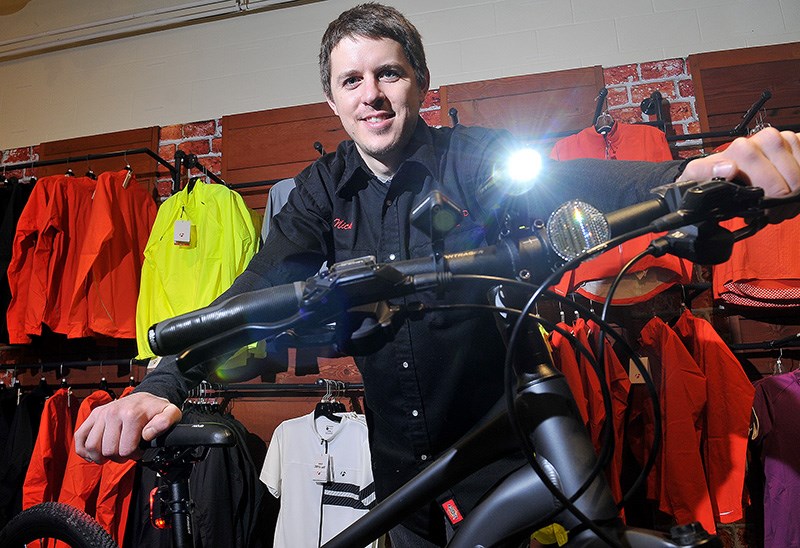If you thought getting around during Wednesday’s monsoon was damp and miserable, imagine doing it on two wheels.
That’s the reality for bike commuters and the challenge of Bike to Work Week, an initiative of the HUB cycling advocacy group running from Oct. 23 to 29 to celebrate and encourage getting to and from work by bicycle.
While cycling to work may be enticing when the sun is out and the days are warm and dry, the coming months of darkness and rain can cower even the hardiest cyclist. Nick Paquette’s job is to make sure that doesn’t happen.
The sales manager at the Trek Bike Store in Port Coquitlam (the former Cap's Westwood Cycle) said safety and comfort technology has advanced so much, there’s no reason for bike commuters to fear the dreariness of a west coast fall and winter.
“Being cold and wet is one of the most uncomfortable feelings,” Paquette said. “You’ve got to be prepared for what you’re getting into.”
That preparation starts with ensuring your ride is safe. That means being visible, Paquette said.
Just as cars are now required to run with headlights on at all times, Paquette recommends cyclists to the same, with small blinking tail lights and forward lights that will catch the attention of motorists as well as pedestrians.
To guide your way through the darkness, small, rechargeable bike headlights mounted on the handlebar are now almost as bright as car headlights.
Paquette recommends a light that can throw at least 150 lumens if you ride at a medium pace, and 500 lumens or more if you’re a speedster. That ensures the road or trail ahead of you is bright enough for far enough that you can react to any hazards.
And given the kind of weather we get in the fall and winter, the lights should also be waterproof and dustproof.
But the biggest visual cue to alert other traffic there’s a cyclist present is the cyclist.
Paquette said it’s important to wear bright clothing that stands out in the daylight, and is equipped with reflective material when it starts getting dark. It’s especially important to have that reflective material affixed to parts of the body that are moving, like legs and hands, as those moving bits are more likely to attract attention.
Of course, those clothes should also afford protection from the elements, especially for extremities like hands and feet.
But no amount of money invested in equipment, clothing, gloves and booties can motivate a cyclist into the cold and rain. That has to come from within.
Paquette said the best way for bike commuters to condition themselves for the discomforts of fall and winter riding is to build up to it by riding once a week, then twice and so on.
“That gives you a sense for what your discomforts are and the strategies to overcome them,” Paquette said.
• There will be three celebration stations in the Tri-Cities during Bike to Work Week where cyclists can fuel up, get their bike checked or get a membership to HUB: on Monday at Ioco Road and Murray Street from 4 to 6 p.m.; Wednesday at Guildford and Pinetree from 6:30 to 9 a.m.; and Thursday at Foster Avenue and Poirier Street from 3:30 to 6 p.m.



